The Gryphon Mikado CD Player
|
A Step Further in the Right Direction |
|
Clement Perry |
|
June 2004 |
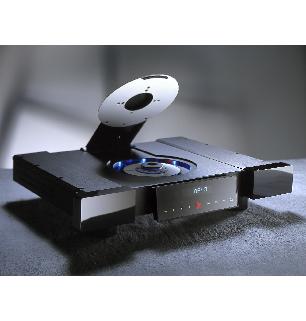
Mikado 1. Mi*ka*do, n.[Jap.] The popular designation of the hereditary sovereign of Japan
The year was 1995. The location was Audio Arts, a long-defunct high-end audio salon located on West Broadway in lower Manhattan, one hundred feet from what we called Boom-Box Heaven or Canal Street. The World Trade Center was one mile north. Madonna lived directly across the street, and the late John F. Kennedy Jr. wouldn’t mind stopping in for a short jam session. More times than not, you could find me basking in the company of the legendary Apogee Diva loudspeakers atop their own newly designed subwoofers. These heavenly sounding transducers, with an impedance swing that could dip as low as 0.3 Ohm, were driven with the greatest of ease by huge MBL 9011 amplifiers using Gryphon’s top of the line Elektra preamplifier and Goldmund’s Mimesis CD player. The room was an amazing 20’ by 40’ spread, with some of the most decorative room treatments and artwork I’ve seen. I was a weekend-warrior salesman at Audio Arts, selling some of the best equipment in the world. To this day, I still have my Gryphon Demagnetizer as a memento of a time and place now sadly gone. Audio Arts never made it. Apogee Acoustics has shut its doors. JFK Jr. is no longer with us, and the World Trade Center is no more. Somehow, we find a way to live on, to succeed, and to enjoy our time on this raging planet.
 Flemming E. Rasmussen is the spirited giant behind the name of the famous Babylonian mythological beast, the half-lion, half-eagle Gryphon. (Literally speaking, Rasmussen is about 6’7”, joining the Who’s Who list of big audiophile designers along with Jeff Rowland, who stands 6’6”, and George Cardas at 6’4”). Gryphon isn’t just another Danish company that’s been toiling away since 1985, to create some nice-looking equipment for our pleasure. No, Gryphon has always been one of the finest high-end companies whose equipment I’ve had the pleasure of listening to. Their worldwide acclaim speaks for itself. At each CES, I’ve always made it a point to stop in the Gryphon Audio room. Not because I can afford their equipment, but because the sound of their room stays with me year after year. Once you have become familiar with and can appreciate the Gryphon sound, it’s very hard to forget. After nine years of knowing Gryphon’s components from hearing them at CES, I relished the prospect of judging for myself just how good their latest components are. And that day has finally arrived.
Flemming E. Rasmussen is the spirited giant behind the name of the famous Babylonian mythological beast, the half-lion, half-eagle Gryphon. (Literally speaking, Rasmussen is about 6’7”, joining the Who’s Who list of big audiophile designers along with Jeff Rowland, who stands 6’6”, and George Cardas at 6’4”). Gryphon isn’t just another Danish company that’s been toiling away since 1985, to create some nice-looking equipment for our pleasure. No, Gryphon has always been one of the finest high-end companies whose equipment I’ve had the pleasure of listening to. Their worldwide acclaim speaks for itself. At each CES, I’ve always made it a point to stop in the Gryphon Audio room. Not because I can afford their equipment, but because the sound of their room stays with me year after year. Once you have become familiar with and can appreciate the Gryphon sound, it’s very hard to forget. After nine years of knowing Gryphon’s components from hearing them at CES, I relished the prospect of judging for myself just how good their latest components are. And that day has finally arrived.
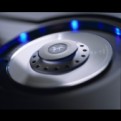 Accepting the box from Mr. DHL was not a problem as I felt its weight was not nearly as substantial as the Electrocompaniet’s hefty 40-plus lbs. The Gryphon Mikado weighs in at a svelte 22 lbs., and if its weight is any indication of the sonic capabilities, you might guess, as I did, that you’ve got a quick, responsive player on your hands.
Accepting the box from Mr. DHL was not a problem as I felt its weight was not nearly as substantial as the Electrocompaniet’s hefty 40-plus lbs. The Gryphon Mikado weighs in at a svelte 22 lbs., and if its weight is any indication of the sonic capabilities, you might guess, as I did, that you’ve got a quick, responsive player on your hands.
The Mikado arrived in a double-boxed carton with the Gryphon logo written in bold type across its sides. I became excited immediately, knowing this wonderful-sounding player had finally arrived. I must admit to lusting over its sexy build and its “Take me to Your Leader” glowing transport.
Spec-wise, the Mikado sports what Gryphon describes as “third-generation upsampling.” While I’ve not been so lucky as to hear the second iteration, its new spec sheet reads, “…Through upsampling, aliasing noise is shifted upwards in frequency and the upper corner frequency of the digital anti-aliasing filters will be more than doubled compared to standard 44.1kHz sample rate. Following the digital to analogue converters, Gryphon Mikado executes the analogue filter function with a single silvered Mica capacitor, for a simple first-order filter with substantially improved sonic characteristics.”
If you’ve either read my review or personally experienced the performance of upsampling all-in-one players like the Electrocompaniet and the Mikado, then you should know that in a lot of ways, it can safely hold its own against SACD players. The EMC outperformed my highly touted Sony SCD1 in virtually every category so convincingly that I virtually abandoned the format until I heard the modified Philips from Alex Paychev only a few months ago.
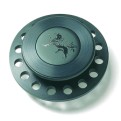 I find it reassuring that Gryphon also doesn’t go along with the “missing bits restored” nonsense I’ve heard with regard to upsampling, as if upsampling “finds” what’s missing and miraculously fills in the gaps. That said, I find it sort of interesting that Gryphon was the first company to use “upsampling” DACs in their Adagio CD player (the reason had more to do with noise shaping than finding ‘missing bits’). Gryphon custom-modified the Philips-based CD-Pro transport’s “floating” mechanism. Gryphon used a no-compromise approach in designing the Mikado using four, two-channel [read: stereo], 24/96 Delta-Sigma DACs employing dual differential circuitry. To ensure against audible distortions induced by the high-speed spinning of the disc, Gryphon designed this top-loader with a die-cast metal frame for improved stability and performance. Add to this a 40-gram precision-tooled anodized aluminum CD clamp designed as a mass loader to further stabilize whirling discs. To eliminate any chance of contaminating the audio signal, the power supplies for both the digital and analogue boards are carefully isolated. True to Gryphon tradition, the Mikado is dual mono configured, using four separate regulated power supplies for both analogue and digital domains.
I find it reassuring that Gryphon also doesn’t go along with the “missing bits restored” nonsense I’ve heard with regard to upsampling, as if upsampling “finds” what’s missing and miraculously fills in the gaps. That said, I find it sort of interesting that Gryphon was the first company to use “upsampling” DACs in their Adagio CD player (the reason had more to do with noise shaping than finding ‘missing bits’). Gryphon custom-modified the Philips-based CD-Pro transport’s “floating” mechanism. Gryphon used a no-compromise approach in designing the Mikado using four, two-channel [read: stereo], 24/96 Delta-Sigma DACs employing dual differential circuitry. To ensure against audible distortions induced by the high-speed spinning of the disc, Gryphon designed this top-loader with a die-cast metal frame for improved stability and performance. Add to this a 40-gram precision-tooled anodized aluminum CD clamp designed as a mass loader to further stabilize whirling discs. To eliminate any chance of contaminating the audio signal, the power supplies for both the digital and analogue boards are carefully isolated. True to Gryphon tradition, the Mikado is dual mono configured, using four separate regulated power supplies for both analogue and digital domains. 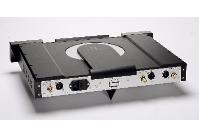
Physically, the rear of the Mikado is simple, offering both balanced (XLR) and unbalanced (BNC) outputs, XLR being recommended as much more alive sounding. The low profile height of the Mikado helps it to appear a work of art, with its touch-panel display designed in a separate housing from the transport. Affixed to the front of the transport’s chassis, the display is user-adjustable: depending on how high or low you sit, a small tilt is all that is needed for best visibility. 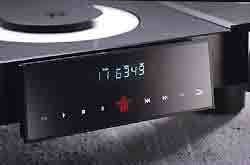 The display sports typical CD signs denoting play, stop, pause, forward, and back, while the only unusual one is the lid-open sign, which resembles hieroglyphics. The power-on switch is located underneath the belly of this player, while the standby switch is located right on the display. A soft touch of the STDB is all it takes, after you’ve engaged the power-on toggle button, to get this sophisticated player started.
The display sports typical CD signs denoting play, stop, pause, forward, and back, while the only unusual one is the lid-open sign, which resembles hieroglyphics. The power-on switch is located underneath the belly of this player, while the standby switch is located right on the display. A soft touch of the STDB is all it takes, after you’ve engaged the power-on toggle button, to get this sophisticated player started.
Why on earth would someone in their right mind spend a whopping $12k on a CD player that doesn’t play SACD or DVD-A discs, and doesn’t play their favorite DVDs? First, the short answer: because it sounds so damn good. The long answer is: I own a lot of hard-to-find CDs that date back to when I was a young teenager. Some of these hard-to-find discs were only recently pressed to CD for the first time. There’s little I love more than visiting CD haunts in and around lower Manhattan and finding newly transferred classics. To date, I own well over 3,000 CDs and the Gryphon Mikado allows me to hear this tremendous library in a way that I have never experienced before in good ol’ 16/44 Redbook. Sorry, but I’m done trying to keep up with the newest Columbia reissue of their last reissue, boasting yet another “Now Remastered in Surround SACD!” logo. Give me a break. I’d much rather take an original reissue, put it in the Mikado, sit back, relax, and do something that seems harder and harder these days among format warmongers: Chill out.
Living up to its reputation, once started, the Gryphon’s very hard to stop. Plugged right into George Mark Audio DAC/pre (used in this case solely as a preamp), I was astounded by the sonic improvements to standard Redbook 16/44 CDs. Using Anaconda AC cords from Shunyata, speaker cables from Ric Cummins’ Pursang series, super-efficient loudspeakers in dB99-SE from Von Schweikert Audio, and the gloriously sweet deHavilland 845 monos proved an outstanding combination. Using my long-term companion in Electrocompaniet EMC1 as a reference, with the Mikado, I was actually able to discern even greater pace, and this added better ebb and flow with respect to large ensembles. Louis Armstrong called it “Swing.”
Because of SACD’s inherent high-rez capabilities, John Pizzarelli’s “Live at Birdland” sounds best played back via Alex Paychev’s modified Philips player (see review in archives). Nothing I own, I believe, can top the analogue feel of DSD by way of this machine. It plays back SACD-encoded material well. It will go toe to toe against the Mikado, but one might say that the deck is stacked in favor of the Philips. I mean, consider: John Pizzarelli is a Telarc-based double disc (Telarc 2SACD-63577) that stands out even among SACD material. It simply sounds better than most other recordings done in DSD (in terms of the disc’s analogue quality and overall feel). In addition, it’s being played back via an all-tube setup, and that has certain sonic advantages of its own, especially if you’re a tube aficionado.
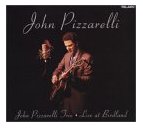
I took the Mikado upstairs to my all digital setup to see what its transport mechanism was contributing to its sonic excellence since the setup is largely an all-digital one.
You want to hear unfettered sound quality via digital amplification? Just plug the Mikado’s digital output into the Zanden Audio Mk IV all tube DAC, then go directly into the TacT 2.2X digital preamp. Run the digital signal from the preamp directly into the TacT M2150 amplifiers and then go get yourself something from the ECM label and your favorite drink. A long time favorite of most of the gang here is Keith Jarrett’s Live at the Bluenote box set. 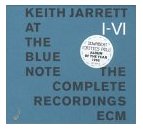 This is a six CD set that took years for me to fully appreciate. I’ve been listening since ’94 and still haven’t heard it all (took almost two years to get to CD 2). The Mikado offered me a gift of perspectives as to why this jazz trio is one of the best. First of all, there is a wide dynamic range, rhythmic flows, and emotions transmitted from Jarrett’s playing that elicits similar responses from perhaps the greatest jazz drummer today—particularly with respect to delicate cymbal work—Jack DeJohnnette. And, of course, I would be remiss if I didn’t include the super soulful bassist Gary Peacock. Now, in case you’re not familiar with the ECM label, it could very well be the best commercially available label producing audiophile-grade recordings in standard 16/44. A large thanks goes to ECM’s recording engineer extraordinaire, Jan Erik Kongshaug, who seems to possess the very unusual talent of making musicians appear in recordings much as they do on stage in a live set. The Mikado has the most difficult of tasks before it, because its main function is not to get in this brilliant engineer’s way. It does not.
This is a six CD set that took years for me to fully appreciate. I’ve been listening since ’94 and still haven’t heard it all (took almost two years to get to CD 2). The Mikado offered me a gift of perspectives as to why this jazz trio is one of the best. First of all, there is a wide dynamic range, rhythmic flows, and emotions transmitted from Jarrett’s playing that elicits similar responses from perhaps the greatest jazz drummer today—particularly with respect to delicate cymbal work—Jack DeJohnnette. And, of course, I would be remiss if I didn’t include the super soulful bassist Gary Peacock. Now, in case you’re not familiar with the ECM label, it could very well be the best commercially available label producing audiophile-grade recordings in standard 16/44. A large thanks goes to ECM’s recording engineer extraordinaire, Jan Erik Kongshaug, who seems to possess the very unusual talent of making musicians appear in recordings much as they do on stage in a live set. The Mikado has the most difficult of tasks before it, because its main function is not to get in this brilliant engineer’s way. It does not.
Other notable artists on ECM are Steve Kuhn, Charles Lloyd and Louis Sclavis. The latter’s “L’affrontement des pretendants” CD [ECM 159927-2] is one of those modern pieces of jazz that would make many an audiophile stand up and take notice, if not for the excellent recording technique, then for its unusually fast and incisive double-bass and cello solos. Perhaps not a toe-tapping, lyrical album, but certainly one of those torture test demo discs. 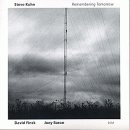 It is quite obvious Kongshaug paid great attention to detail in recording Kuhn’s drummer, Joey Baron, as he did to the piano on Bittersweet Passages from the Remembering Tomorrow album [ECM 78118-21573-2] CD. The one thing I noticed right from the start was how delicately Kuhn’s piano was recorded. This clearly indicated how intimate the Mikado could be when it was necessary. The Mikado possesses transparency (a virtue of its improved noise floor) as well as tonal rightness I would have never believed possible if I had not heard it for myself. I remain very impressed with the Electrocompaniet, but when it comes to dynamic range and purity quotient, the Mikado has set a new benchmark.
It is quite obvious Kongshaug paid great attention to detail in recording Kuhn’s drummer, Joey Baron, as he did to the piano on Bittersweet Passages from the Remembering Tomorrow album [ECM 78118-21573-2] CD. The one thing I noticed right from the start was how delicately Kuhn’s piano was recorded. This clearly indicated how intimate the Mikado could be when it was necessary. The Mikado possesses transparency (a virtue of its improved noise floor) as well as tonal rightness I would have never believed possible if I had not heard it for myself. I remain very impressed with the Electrocompaniet, but when it comes to dynamic range and purity quotient, the Mikado has set a new benchmark.
But once you switch gears and play original or old recordings, poorly remastered in DSD, or standard 16/44 Redbook material, the Philips falls on its face when compared against the Mikado. This Danish dynamo will play back standard Redbook recordings like nothing I’ve had in my listening room, except for near-perfect DSD recorded material like Pizzarelli.
The last thing to do with a player of this pedigree is to remove the Zanden Audio Mk VI DAC from the signal path. Attempting this previous to the arrival of the Mikado proved to have both good and bad results. The good was that the bass was more powerful, tuneful, and tighter. The downside is that the treble is harsher, forcing me to keep the volume low or risk early listening fatigue. This is the sole reason I own the Zanden.
Much to my amazement, the Mikado cured these ills. Its transport is similar to the Electrocompaniet’s top-loader as both are Philips-based mechanisms, but I think that’s where the similarities end. The Mikado, when used solely as a transport, worked so well with the TacT equipment that I no longer have use for this world-class DAC. For the first time since owning TacT electronics, I have been able to thoroughly enjoy its technological advances as a purely digital medium. The inclusion of the Mikado not only boosted the overall performance of this all-digital approach, but also stopped the negative finger-pointing at the TacT gear. Yes, believe it or not, the TacT gear sounds more musical, dynamic, and cleaner with the Mikado at the helm than with the mighty Zanden.
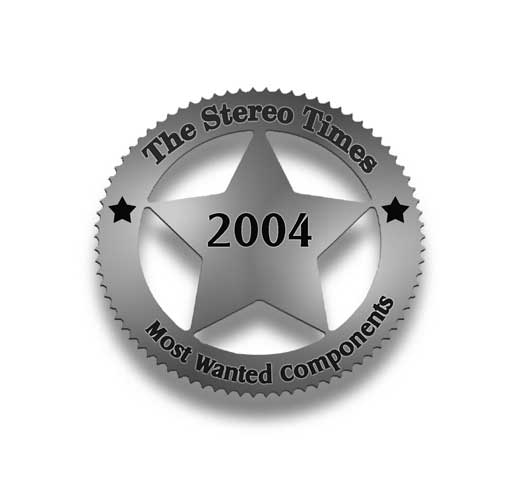
In closing, the Gryphon Mikado has surpassed the already high expectations I had for it. I discovered state of the art qualities: its ability to soundstage—is laterally as well as in terms of instrument height—better than I would have believed possible. The energy level is high, yet relaxed when it needs to be. The utter transparency and quietness of its drive mechanism allow for much more information to be revealed. The surefootedness of the bass, along with its quick stops and starts, shall be the Mikado’s claim to fame. No matter the format, analogue, digital, SACD, or DVD-A, the Gryphon Mikado will shine through playing back 16/44 Redbook. If you’re an equipment nut, I don’t suspect you’d buy a player that doesn’t support a multitude of formats. If you’re a music lover first and foremost, then you owe it to yourself to experience the same sense of excitement as I did when I put on my first CD through the Mikado. This sexy looking player sounds even better than it looks, if you can believe that. I’m keeping this one. And guess what else? I think I’m gonna take a stroll down by Boom Box Heaven.
Second Opinion:
Lew Lanese
Recently, I spent an entire Saturday in the listening room of STEREO TIMES’ offices in New Jersey. Now, I have been there on many occasions, but I never stayed that long listening to Clement Perry’s system. He always has very good sound. However, in this instance, the sound was outstanding – if not extraordinary – so much so that I couldn’t tear myself away. Most of the equipment was the same as my last visit there, except for a couple of changes – different amps for the subwoofers, a pair of balanced digital interconnects, and a new CD player, the Gryphon Mikado. After several hours of listening, I couldn’t find anything to criticize. Clement knows me well enough that I don’t have to say anything – he looks at my face and my body language and reads my reactions.
I had brought some of my own CDs, particularly opera and classical. I knew I would get a good sampling of jazz, vocals, etc. – some of Perry’s recordings with which I was very familiar. The CDs I brought were those that I had been listening to on my own system while I was reviewing the TEAC Esoteric P-70 transport and D-70 DAC – another superb CD combination. The Gryphon faced stiff competition, making it vulnerable as the “source” in Clement’s system, exposed by the detailed, high-resolution rest of the system, and my familiarity with the CDs I brought.
I couldn’t pin it down to the new subwoofer amps (Acoustic Reality). And the new digital interconnects, if they were such an improvement, would show off the source for what it was. What it was, I concluded, was that the Gryphon was a first-class CD player and, together with the rest of the equipment, produced a synergistic combination that was one of the most relaxed and musical systems I have ever heard.
I was in such awe of what I had heard that when I left Perry’s house, I took the New Jersey Turnpike going the wrong direction – I didn’t realize it until I had gone fifteen miles the wrong way.
Specs:
Four Dual-Differential 24 bit/96 kHz AKM Digital-to-Analog Converters with separate regulated power supplies
Modular digital audio sections for possible future upgrades
Two custom-built, temperature-compensated crystal oscillators with better than 5 parts per million accuracy
Modified Philips CD-Pro 2 transport with all-metal chassis
True class A, fully discrete analog circuits with no negative feedback
First-order analog filter with silvered Mica capacitor
+/- 20 VDC regulated voltage supplies for best THD and noise suppression in analog sections
Four separate custom-built toroidal transformers for digital and analog sections
Completely isolated power supplies for digital section and transport/display
15,000 microFarad power capacitor banks per channel
True Dual Mono Configuration
Ultra-short signal path with minimal Internal wiring
Four-layer printed circuit board with silver surface for optimal signal transfer
Balanced analog outputs with PCB-mounted gold-plated Swiss Neutrik XLR sockets.
Single-ended analog outputs with custom-made PCB-mounted gold-plated phono sockets
Balanced 110Ohm AES/EBU and 75Ohm S/PDIF digital outputs
Fully remote-controlled operation
Designed and built in Denmark
Contact: Gryphon Audio Designs
Industrivej 9
8680 RyDenmark
Price $12,000
Website: www.gryphon-audio.dk
![]()
Don’t forget to bookmark us! (CTRL-SHFT-D)
Stereo Times Masthead
Publisher/Founder
Clement Perry
Editor
Dave Thomas
Senior Editors
Frank Alles, Mike Girardi, Russell Lichter, Terry London, Moreno Mitchell, Paul Szabady, Bill Wells, Mike Wright, and Stephen Yan,
Current Contributors
David Abramson, Tim Barrall, Dave Allison, Ron Cook, Lewis Dardick, John Hoffman, Dan Secula, Don Shaulis, Greg Simmons, Eric Teh, Greg Voth, Richard Willie, Ed Van Winkle, Rob Dockery, Richard Doron, and Daveed Turek
Site Management Clement Perry
Ad Designer: Martin Perry





Be the first to comment on: The Gryphon Mikado CD Player